Bosque del Apache National Wildlife Refuge in winter is about birds. Most importantly, it is about the throngs of sandhill cranes and droves of snow geese that arrive here each autumn to pass the winter months away from their summer breeding grounds far to the North. Bosque is also an excellent place to find desert songbirds foraging within the desert underbrush. With such an abundance of prey, it draws much attention from avian predators like eagles and hawks, looking to cash in on the large numbers of potential meals.
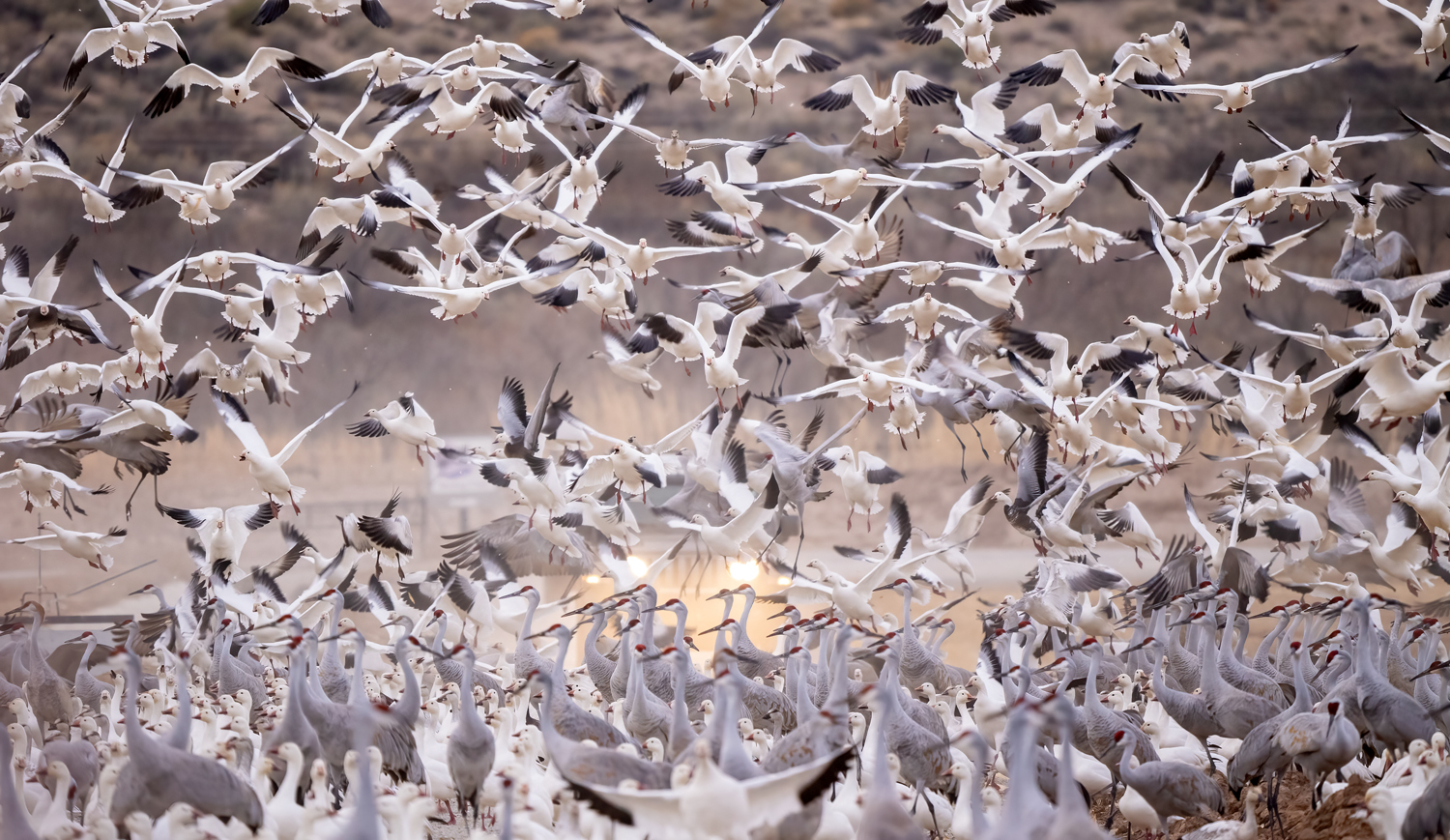
Since my first time driving into this thorny, thirsty area of the Rio Grande Valley back in the winter of 1986, I realized the beauty was not just in the numbers of majestic sandhill cranes or the thousands of ivory-white snow geese that find winter refuge in the braids of the river. I also found magic in the changing pastel sunlight that occurs each winter day across this portion of New Mexico’s Chihuahua desert.
Days in December are far from long but can provide enough time and light to craft fantastic wildlife images from this desert locale. The low-level light of winter days brings out some of the most colorful sunlit hours. We structured our days around finding large groups of cranes and geese waking up in the predawn glow. These gregarious roosts, positioned well away from the daytime feeding grounds, had a life all their own. Each of our mornings here in the Bosque del Apache area allowed us to capture the activity of the roost as it came alive. Just as the sun would break the horizon, the bird activity would increase with cranes waking, stretching, and eventually peeling away from the roost in small groups taking flight and wheeling out into the morning sun. Skeins of snow geese stretched across the sky announcing their morning excitement through a cacophony of calls as they departed the refuge on the daily run to feed in valley fields.
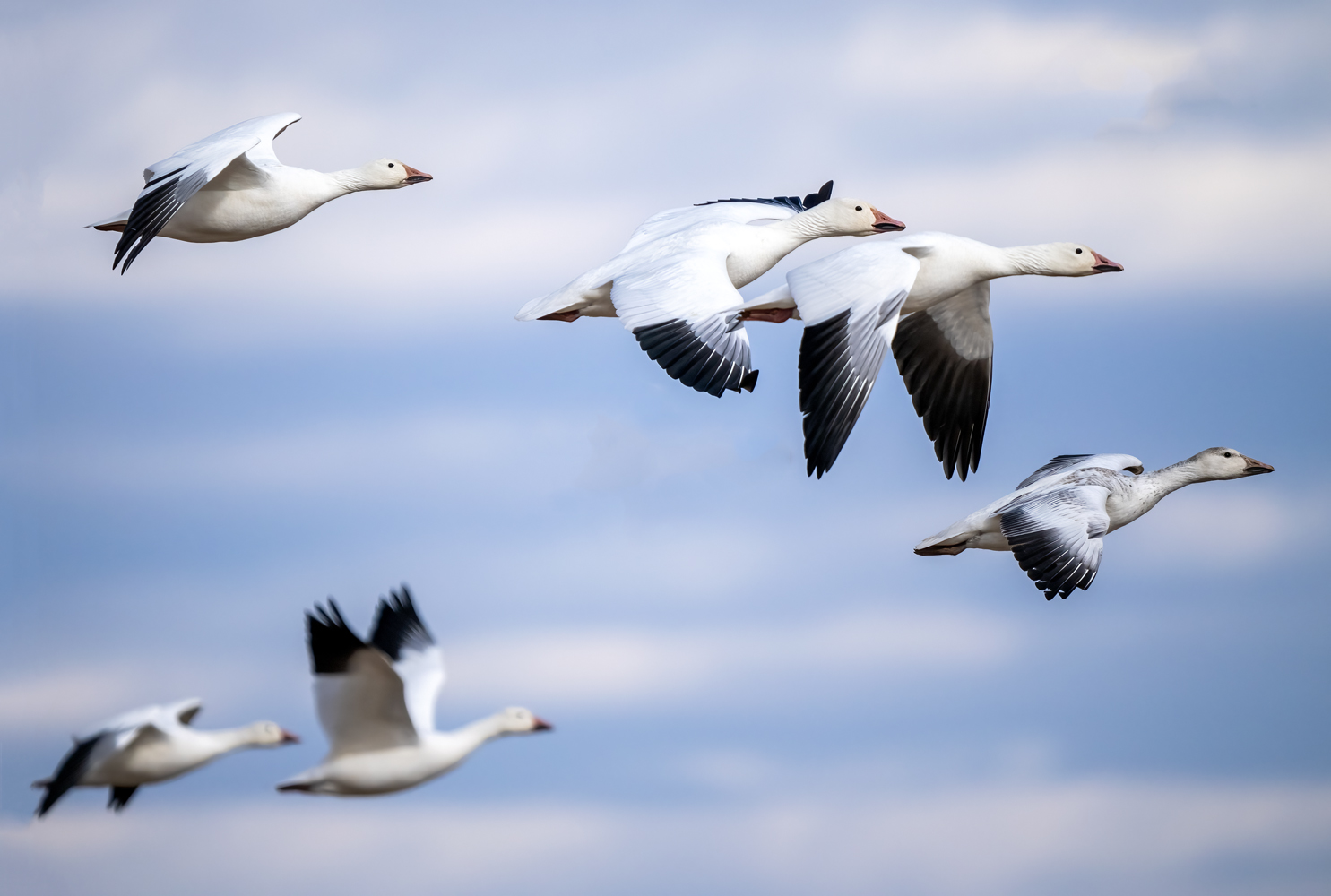
After the departure of birds from the safety of the night roosts, we would head off for a quick picnic breakfast then back out to explore the refuge’s great diversity of birds. We did not need to go far from our breakfast locale to encounter some of the smaller inhabitants like Woodhouse’s scrub jays, pyrrhuloxia, and Gamble’s quail to name a few.
Our morning break was a usual quick one so we could get back onto the refuge roads and work the remaining morning light. A short drive into the refuge would turn up a variety of birds to set our sights on as well as the occasional mule deer buck or javelina.
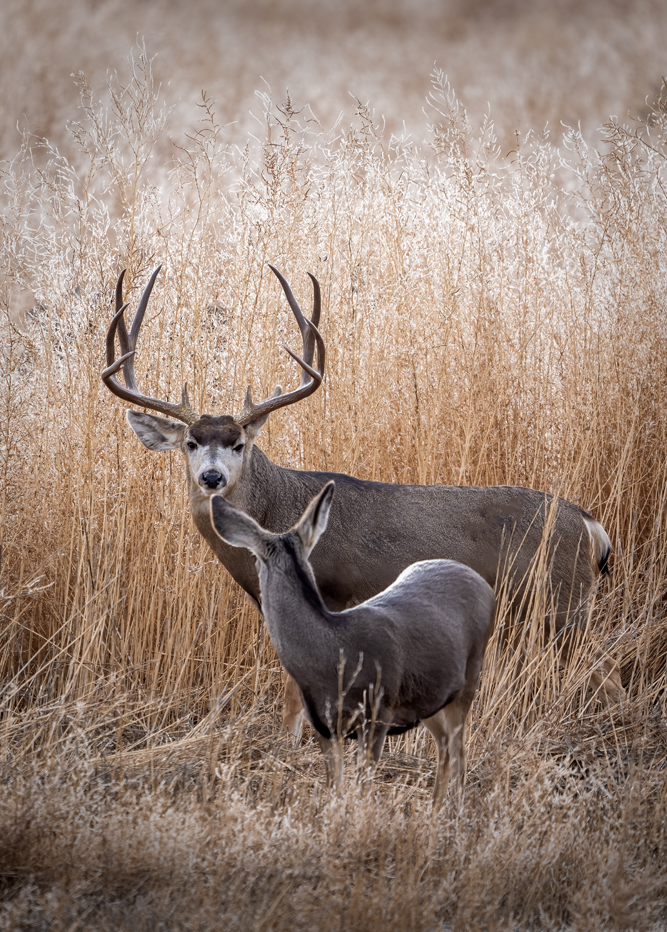
Our midday routine offered a break for lunch at a local restaurant then a short rest in our hotel rooms to regroup and charge batteries before we were back out for more photography. We started each afternoon with a continuation of our earlier wildlife drive, concentrating on more of the diversity of birdlife. These afternoons could find us aiming our telephoto lenses at a young red-tailed hawk or possibly following a northern harrier as it hunted in a zig-zag pattern across a fallow field.
Our late-day photography would have us back at a nightly roost to be in position for the expected evening arrival of cranes and geese. While the mornings at the roost gave us plenty of opportunities to capture images as the birds took flight, evenings provided the images of birds setting wing as they dropped in and arrived back at the roost. We would stay and photograph all this avian activity as it unfolded under the glow of sunset and the promise of a safe night under the New Mexico sky.
With the birds of Bosque behind us, it was time to explore more amazing New Mexico light on the sugary gypsum dunes of White Sands National Park. Here our quest would take us into a landscape as much dreamlike as desert-like. With two days to photograph this iconic desert landscape, the recent winds and low park visitation provided some of the least tracked dunes I have experienced here in years. The unspoiled landscape and lack of other photographers gave us the sense that we had it all to ourselves.
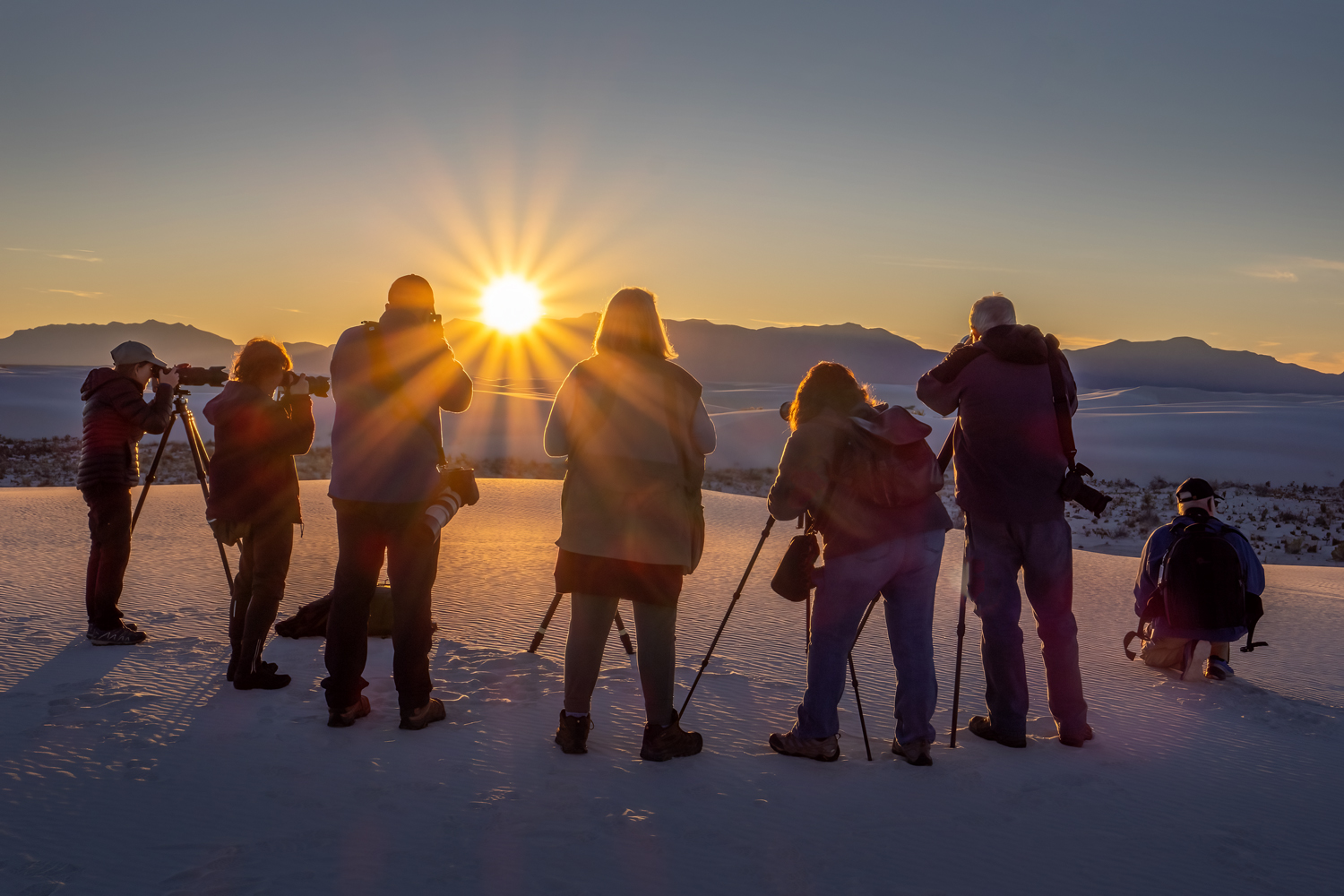
With our early morning entry into the national park, we could hike into a remote area of dunes and explore the patterns of wind ripples over undulating dunes that extended into the distant mountains. Entering the dunes with the waking day’s blue hour light over the white untrammeled sand was an ethereal experience. As sunrise broke over the bony mountain ranges to the east, blue hour would give way to pink then the sharp glow of morning would track over the dunes creating patterns of golden light and shadow. With the sun now up, it was the perfect time for the group to use a small aperture to create sun stars as the sun continued its daily journey above the desert sands. Eventually, the warmth of the morning light would wain and the contrasty light would take over. This was ideal for those wishing to work with black-and-white images and a little more abstract look at the desiccated landscape before us.
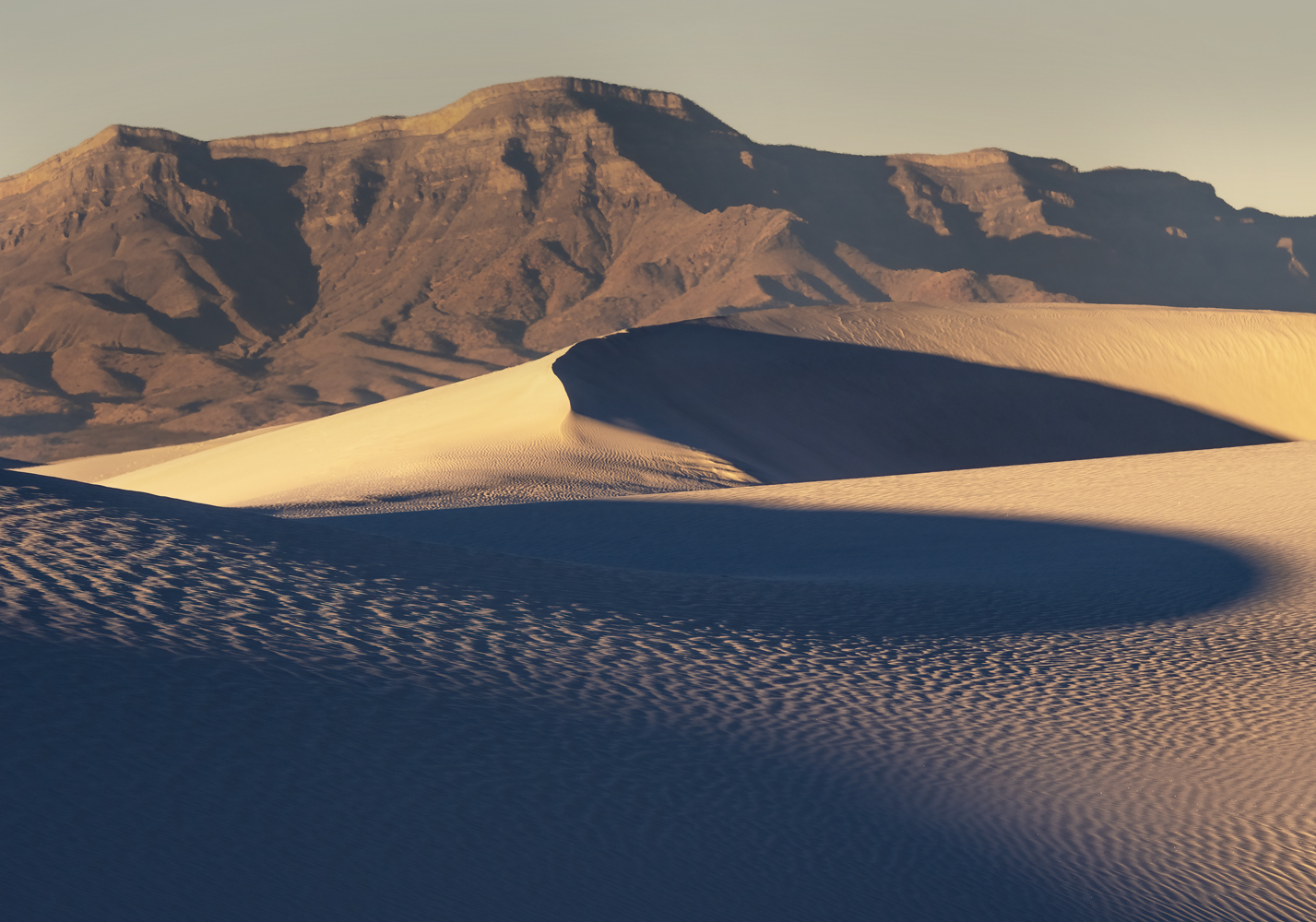
After a hearty midday meal, we would return to this landscape to visit some of the smaller dunes where we could find low-growing shrubs and the dagger-like spikes of yucca clawing at textured sands. Here we could concentrate on creative compositions with more intimate patterns before the sun dropped near the horizon and we turned our focus to the arrival of sunset on the grand desert landscape. During our two days here, each walk into the white desert sands revealed a beauty to us and we all did our best to capture just a piece of its essence.
The days may be shorter this time of year but the low-angle arc of the winter sun baths New Mexico in a rarefied glow. Between the excitement of photographing the birds of the lower Rio Grande Valley, along with the scenic undulating dunes of White Sands National Park this photo tour produced a treasure trove of images for our travelers to take home with them.

